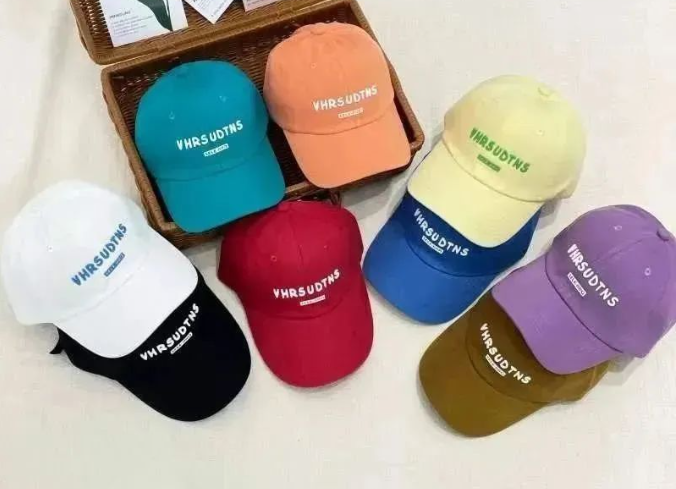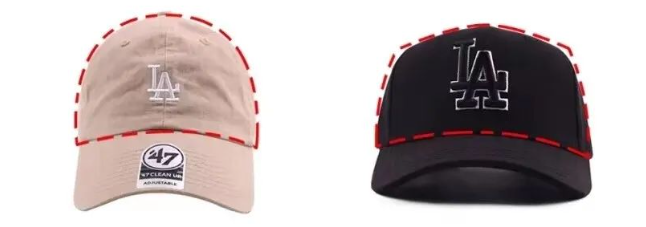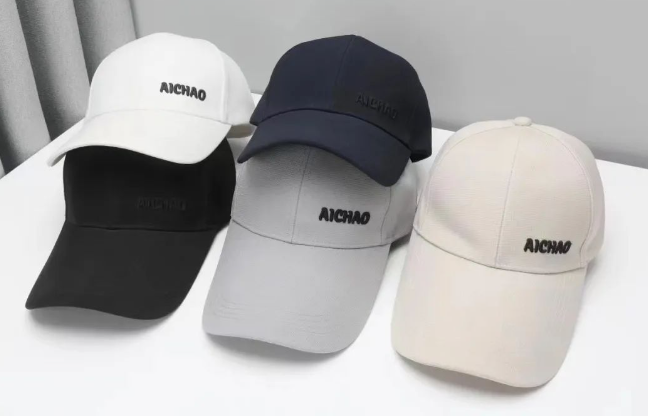From Sunshine-Infused Baseball Caps to Chic Toppers
Published On: April 20, 2024 By: ray herb

For over 25 years, Aung Crown, a leading Chinese hat manufacturer, has been at the forefront of headwear design. Today, we’d like to introduce you to the elevated baseball cap – a timeless accessory reborn for the modern fashionista.
The baseball cap transcends trends. It’s a statement piece for the style-conscious individual, a finishing touch that complements any outfit, from casual to elegant. Functional and fashionable, it offers sun protection and effortlessly frames the face, creating a flattering silhouette. Whether you’re a seasoned hat aficionado or a curious newcomer, the baseball cap is an essential addition to your wardrobe. Let Aung Crown be your guide to this versatile and enduring accessory.

Finding the Perfect Baseball Cap for Your Face Shape
Here’s the information on how to choose a baseball cap to flatter your face shape:
Baseball caps are a fantastic accessory, but choosing the right one can significantly impact how it frames your face. Here’s a breakdown of key features to consider:

1. Crown Height
Opt for a structured or mid-crow cap if you have a rounder face. This adds height and definition, creating a more balanced look. Conversely, a soft or ow-crown cap can complement a longer face shape by visually shortening it.
2. Brim Curve
A curved brim is generally more flattering, softening facial features. A flat brim can add a touch of edge but might be less forgiving for wider faces.
3. Overall Fit
A well-fitting cap shouldn’t be too loose or tight. It should sit comfortably on your head without creating excessive bulk or bulging at the sides.

Additional Tips:
- Experiment with angling the cap slightly to the side for a more casual and relaxed look.
- Consider the visual weight of the cap’s colors and patterns. Busy patterns tend to draw attention, while solid colors offer a more streamlined look.
Choosing the Perfect Baseball Cap: A Guide to Flattering Your Face Shape
Baseball caps are a staple accessory, but their impact hinges on how they frame your face. Here’s a breakdown to help you find your perfect match:
1. Crown Height:
Round Face: Opt for a structured or mid-crown cap for added height and definition. This creates a more balanced look.
Long Face: A soft or low-crown cap can visually shorten your face.

2. Brim Curve:
Generally Flattering: A curved brim softens facial features.
Bold Statement: A lat brim adds an edgy touch, but might not suit wider faces.
Overall Fit: The cap should sit comfortably without being too loose or tight. Avoid excessive bulk or bulging at the sides.

3. Beyond the Basics:
Angled Appeal: Experiment with tilting the cap slightly to the side for a relaxed vibe.
Visual Weight: Consider the impact of colors and patterns. Busy patterns draw attention, while solid colors offer a streamlined look.
4. Deep Dive: Brim & Face Shape
Small Face: A large arc with a narrow brim (1-2 cm wider than your face) creates a visually smaller face.
Wider Face: A gentler curve with a brim wider than your face creates an inverted V shape, slimming the face.
5. Bonus Tips:
Low Skulls: Deep caps add height, but can lengthen long faces.
Long Faces: Parting some hair near your ears can soften cheekbones.
Daily Wear: Aim to show your eyebrows for optimal visual proportions.
Photography Trick: Super low caps might be better suited for photos as they can distort facial proportions in real-life situations.

Cotton vs. Denim: Unveiling the Perfect Baseball Cap Material
Choosing the right material for your baseball cap goes beyond aesthetics. Here’s a breakdown of two popular options:
Cotton
Pros: Soft, natural, breathable, comfortable, affordable. Ideal for summer due to its airy texture.
Cons: Lacks structure, and may lose shape over time.
Denim
Pros: Durable, long-lasting, stylish with a unique American casual vibe. The texture develops character over time. Maintains shape well due to its sturdy nature.
Cons: Can be stiffer than cotton, potentially less breathable in very hot weather.
Cotton reigns supreme for pure comfort and breathability, making it ideal for hot summer days. Denim offers a unique aesthetic, and superior durability, and holds its shape well. Consider your priorities when making your choice!
Long vs. Short Brims of Baseball Caps
The length of a baseball cap’s brim offers a unique blend of style and function. Here’s a breakdown to help you decide:
Long Brim:
Pros: Provides superior sun protection, ideal for those prioritizing shade.
Cons: Can obstruct your line of sight and limit peripheral vision. May feel cumbersome for some activities.
Face Shape: Creates a lengthening effect, flattering for individuals with rounder faces.
Short Brim:
Pros: Offers a more streamlined look, less likely to obstruct vision. Suitable for active lifestyles.
Cons: Offers less sun protection.
Face Shape: Can accentuate facial features, ideal for those with longer faces.

Ultimately, the ideal brim length depends on your individual needs. Prioritize sun protection? Opt for a long brim. Value a sleek look and unrestricted vision? Choose a short brim. Consider your face shape for a complementary aesthetic. Remember, the best baseball cap is the one that makes you feel confident and comfortable!
Demystifying Baseball Cap Fabrics: A Guide to Weaving and Composition
Baseball caps come in a variety of fabrics, each offering unique advantages. Here’s a breakdown to help you navigate your options:
l Weaving Methods
Woven: This method involves interlacing threads at right angles. Examples include:
- Yarn Card: A sturdy and versatile fabric, often used for structured caps.
- Canvas: A heavy-duty fabric known for its durability and resistance to wear and tear.
Knitting: This method creates a looped structure. Mesh fabric is a prime example, offering breathability and flexibility.
Fabric Composition
Natural Fibers
- Cotton:Soft, breathable, and comfortable, ideal for everyday wear. Examples include cards, canvas, and poplin.
- Cotton Blends (Cotton-Polyester): Offer a balance between comfort and durability. Examples include cards, canvas, and poplin.
- Wool Blends (Wool-Nitrile): Provide warmth and a unique texture.
Synthetic Fibers
- Polyester: Durable, water-resistant, and wrinkle-resistant. Examples include peach skin velvet, spring textiles, and polyester cards.
- Acrylic: A wool-like alternative that’s often softer and more affordable. Examples include acrylic yarn cards.
- Nylon: Strong, lightweight, and fast-drying, often used in performance caps.
When choosing the right fabric, please consider your priorities
Comfort: Opt for natural fibers like cotton or cotton blends.
Durability: Choose synthetic fibers like polyester or nylon.
Breathability: Look for mesh or cotton fabrics.
Warmth: Consider wool blends for colder weather.
By understanding weaving methods and fabric composition, you can select the perfect baseball cap to match your style and needs.

Decoding Baseball Cap Fabrics: A Deep Dive into Cotton and Beyond
While a variety of fabrics can be used for baseball caps, cotton reigns supreme. Let’s delve into the world of cotton options and explore some alternatives:
Cotton Fabric Breakdown:
Cotton Twill Yarn Card: This is a widely used fabric category. Consider two key factors:
- Yarn Count:Indicates yarn thickness. Higher numbers represent finer yarns.
- Density: Refers to the number of yarns per unit area (usually 4 square inches). Higher density signifies a more tightly woven fabric.
Cotton Canvas: Common choices include 2X2 and 2X3 weaves. Canvas is typically plain-woven and known for its durability.
Cotton Poplin: A lightweight fabric often used for hat linings and sweatbands. It comes in plain colors or yarn-dyed options. Fabric quality hinges on the yarn used.
Beyond Cotton
Polyester-Cotton Blends: Offer a balance between comfort (cotton) and durability (polyester). Common ratios include 65/35 (cotton/polyester) and 50/50.
Polyester: Provides superior strength, resilience, and wrinkle resistance. However, it can be less breathable and prone to static cling compared to cotton.
Corduroy: A thicker fabric with good warmth retention. It features vertical wales (cords) on the surface. Common corduroy types include 11-wale and 14-wale (number of wales per inch).
